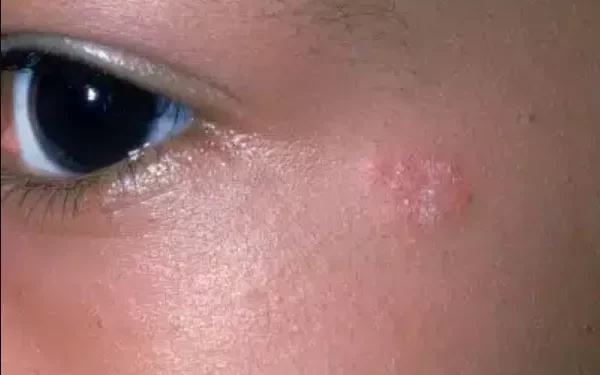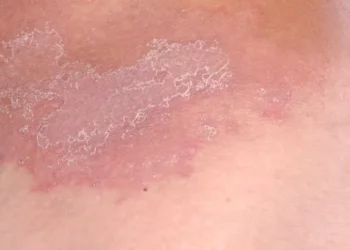Ringworm is a common fungal infection that affects the skin. Despite its name, ringworm is not caused by a worm. Instead, it is caused by a group of fungi known as dermatophytes. These fungi thrive in warm, moist environments and can infect the skin, hair, and nails. The infection typically appears as a red, circular rash with raised edges, often referred to as a “ring.”
In this article, we will explore the types of organisms that cause ringworm, how they spread, and how to prevent and treat this condition.
The Organism Behind Ringworm: Dermatophytes
Ringworm is caused by dermatophytes, a group of fungi that live on the skin’s outermost layer. These fungi thrive by feeding on keratin, a protein found in the skin, hair, and nails. Dermatophytes are microscopic and can spread easily from person to person or through contact with contaminated surfaces or animals.
The three main types of dermatophytes that cause ringworm are:
- Trichophyton
- Microsporum
- Epidermophyton
Each of these fungi is responsible for causing different forms of ringworm. These organisms belong to the larger group of fungi called “Ascomycota,” which includes many species that infect the skin, nails, and hair.
Trichophyton: A Common Cause of Ringworm
The genus Trichophyton is one of the most common causes of ringworm. Several species of Trichophyton can infect different parts of the body. For example, Trichophyton rubrum is a frequent cause of athlete’s foot, while Trichophyton tonsurans is often responsible for ringworm of the scalp. These fungi are highly contagious and can spread through direct contact with an infected person or contaminated surfaces, such as shared towels, clothing, and sports equipment.
Trichophyton fungi are also found in soil, but they are more commonly transmitted from person to person. This makes them a significant concern in public places like gyms, locker rooms, and swimming pools.
Microsporum: Ringworm of the Scalp and Skin
Another genus of dermatophytes that causes ringworm is Microsporum. Microsporum species are commonly responsible for ringworm of the scalp (tinea capitis) and the skin (tinea corporis). The fungi in this genus can also infect nails and cause tinea unguium (onychomycosis).
Microsporum canis is a species that often infects both humans and animals, especially cats and dogs. It can be spread through direct contact with infected animals or contaminated objects. Microsporum fungi are known to be highly contagious in environments where people and animals are in close contact, such as animal shelters or homes with pets.
Epidermophyton: A Less Common Cause of Ringworm
Epidermophyton is another genus of dermatophytes, although it is less commonly responsible for ringworm infections compared to Trichophyton and Microsporum. Epidermophyton floccosum is the primary species in this genus that causes skin infections like athlete’s foot and jock itch (tinea cruris).
This type of fungus can spread through direct skin-to-skin contact, making it a concern in places like gyms and swimming pools. Like other dermatophytes, it thrives in warm and damp environments, making it easier to contract in areas where the skin is frequently moist.
Types of Ringworm Infections and Their Causes
Ringworm can occur in various parts of the body, each with its own set of symptoms and causes. The infection is categorized based on the area it affects, and each category may be caused by a different species of dermatophyte.
1. Tinea Corporis (Ringworm of the Skin)
This is the most common form of ringworm. It affects the skin on various parts of the body, including the arms, legs, and torso. Trichophyton and Microsporum species are most often responsible for this infection. It presents as a red, circular rash with raised edges and clear skin in the center.
2. Tinea Pedis (Athlete’s Foot)
Athlete’s foot is a common fungal infection that affects the feet, particularly between the toes. It is often caused by Trichophyton rubrum and Epidermophyton floccosum. The infection leads to itching, burning, and peeling of the skin on the feet, especially in moist areas.
3. Tinea Cruris (Jock Itch)
Jock itch typically affects the groin area and is caused by Trichophyton or Epidermophyton species. It causes redness, itching, and a rash in the groin, thighs, and buttocks. This infection is common in athletes and individuals who wear tight clothing, which can create a warm, damp environment conducive to fungal growth.
4. Tinea Capitis (Ringworm of the Scalp)
Ringworm of the scalp is most commonly caused by Microsporum canis and Trichophyton tonsurans. This infection leads to hair loss, itching, and the formation of scaly patches on the scalp. It is more common in children and can spread easily in schools and daycare centers.
5. Tinea Unguium (Nail Fungal Infection)
When dermatophytes infect the nails, the condition is called tinea unguium, or onychomycosis. Trichophyton rubrum is often responsible for nail infections, causing thickened, discolored, and brittle nails. This infection can spread from the toenails to the fingernails and vice versa.
How Does Ringworm Spread?
Ringworm is highly contagious and can spread in several ways:
Person-to-Person Contact: Direct contact with an infected person is the most common way ringworm spreads. This can happen through skin-to-skin contact during activities like hugging, shaking hands, or sexual contact.
Contact with Contaminated Objects: Fungal spores from ringworm can live on surfaces for extended periods. Touching contaminated towels, clothing, hairbrushes, or gym equipment can result in infection. This is why public spaces like gyms and swimming pools are common locations for the spread of ringworm.
Animal-to-Person Contact: Ringworm can also spread from infected animals to humans. Pets, especially cats and dogs, can carry Microsporum canis, which causes ringworm. Pet owners should be cautious when handling animals that show signs of ringworm infection, such as hair loss or scaly patches.
Soil Contamination: In rare cases, dermatophytes can live in soil. People who come into contact with contaminated soil, particularly in tropical and subtropical regions, are at risk of contracting ringworm.
How to Prevent Ringworm
Preventing ringworm involves taking steps to avoid exposure to the fungi that cause the infection. Some preventive measures include:
Maintain Good Hygiene: Wash your hands frequently and keep your body clean and dry. Fungi thrive in damp environments, so make sure to dry off completely after swimming or showering.
Avoid Sharing Personal Items: Do not share towels, clothing, or personal grooming items like combs and razors.
Wear Proper Footwear in Public Areas: When using public showers, pools, or locker rooms, wear flip-flops or sandals to protect your feet from fungal spores.
Treat Pets for Ringworm: If you have pets, check them regularly for signs of ringworm, especially if they are scratching or losing hair. Seek veterinary care if you suspect your pet has ringworm.
Treatment for Ringworm
Ringworm is treatable with antifungal medications. The type of treatment depends on the severity and location of the infection. Over-the-counter creams and ointments containing antifungal agents like clotrimazole or terbinafine are commonly used to treat mild cases of ringworm. For more severe or widespread infections, a doctor may prescribe oral antifungal medications.
It is important to continue the treatment for the recommended duration, even if the symptoms improve, to ensure the infection is fully cleared.
Conclusion
Ringworm is a fungal infection caused by dermatophytes, including species from the Trichophyton, Microsporum, and Epidermophyton genera. These fungi thrive in warm, moist environments and can infect the skin, nails, and hair. Ringworm spreads easily through direct contact with infected individuals, contaminated objects, or animals. Preventing ringworm involves good hygiene, avoiding shared items, and taking precautions when in public spaces. With proper treatment, ringworm can be effectively managed and cured.
Related topics



























